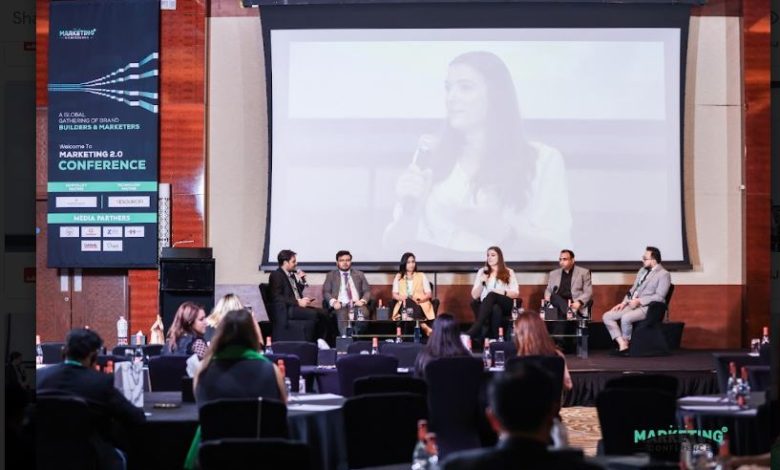Marketing 2.0 Conference To Bring The Focus Back On Ad Fraud & Scams

It is well known that advertising frauds and scams have been plaguing the digital marketing industry for a long time. The problem of ad fraud has become so severe that it stands out as one of the most serious threats to the revenue of both advertisers and publishers, as elaborated by Marketing 2.0 Conference’s speakers.
If you find a need to read this article, you probably already know that advertising fraud is a significant problem for advertisers and publishers as well. While the focus may have shifted from ad fraud issues in recent years as digital marketers have relied more on programmatic buying channels and new technologies for scaling their campaigns, there’s no denying this issue remains relevant today.
As per recent reports, advertising fraud costs are expected to be $81 billion in 2022 and $100 billion in 2023 if nothing is done to counter them. The matter is going to be worse as these figures do not include what advertisers lose due to invalid traffic/visitors or fake leads generated by bots. The speakers of the Marketing 2.0 Conference will also get into foregrounding the reasons how fraudulent traffic generators are continuously looking for new ways to circumvent filters, get past security measures, and fool publishers into believing that their sites/applications are legitimate sources of traffic – all to make money from digital advertising budgets.
Let’s understand the matter even further by diving deep into the discussion.
Ad Fraud: A Growing Concern
Some estimates put losses due to fraudulent impressions at up to $7 billion per year by 2022. These figures expect to rise even higher as time goes on. Fortunately, for anyone who spends time working in digital marketing, Google has been taking steps over the past few months toward curbing the growth of ad fraudsters with its own AI solutions and machine learning algorithms designed specifically for tackling these types of problems head-on. However, there is a significant threat to the revenue of both advertisers and publishers as they tarnish the brand image and cause a loss of revenue as a result of such fraudulent activities, say marketing experts and stalwarts of the Marketing 2.0 Conference.
Further, they opine that fraudsters use advanced technological methods to create fake impressions, clicks, and conversions, deceiving advertisers into paying for such activities. Advertisers who are duped by these schemes suffer significant losses. For example, an ad network recently reported losing over $15 million due to ad fraud incidents during one year alone.
The Marketing 2.0 Conference will address the issues of ad fraud and scams in a bid to help marketers understand better how to avoid them, as well as how to recover from them. Fraudulent ads can take many forms, including profiteering from affiliate networks; buying high-profile websites with fake traffic; stealing data and selling it on the black market; creating fake profiles on social media platforms so they can sell their products at higher prices than they usually would be sold at if they didn’t have such a large following online through those profiles’ fraudulent accounts, and many other.
Ad Fraud: Impact on Publishers And Advertisers According To Marketing 2.0 Conference’s Experts
Ad fraud affects advertisers and publishers because it results in lower revenues due to decreased sales, higher costs spent on buying media, etc. At the same time, it affects publishers’ reputation and ability to sell inventory effectively if buyers aren’t willing to pay premium prices for merchandise that could be potentially fraudulent (due diligence checks).
Fortunately, all parties can take some actions to at least mitigate the effects of fraud, as concluded in the Marketing 2.0 Conference’s panel discussions. Actions to take can include collaboration between brands & advertising technology providers, who offer verification tools that help detect fraudulent traffic without disrupting user experience but still allows marketers access across web properties. It allows them greater control over where they spend their budgets while ensuring transparency throughout the supply chain process.
Google has also been taking steps to curtail the growth of ad fraudsters by providing transparency and protection measures on its platform. For example, it allows advertisers to see which ads are served up and how many times they click on them. In addition, Google is implementing a new “View Ads” feature in its AdWords platform, allowing advertisers to see how their ads perform when they run through third-party networks. The idea behind this feature is that it would make it easier for advertisers to identify problematic domains or publishers who may be running a scam operation.
Some advertisers and publishers have said they appreciate the move because it gives them more control over where their ads appear across all platforms—especially those managing large budgets for multiple campaigns at once. But others remain skeptical about how effective Google’s efforts will ultimately prove against scammers who continue finding ways around such safeguards. These include protecting users, helping marketers build brand safety, and making ongoing investments in fighting bad ads across their platforms.
The goal of the Marketing 2.0 Conference is to educate marketers on how to effectively fight ad fraud and protect their strategy and budget, as well as to assist them in building brand safety against it. Talking of initiatives, Google has invested in machine learning and AI to identify and block bad ads. They’ve also been investing in human review teams that see a large volume of the ads served on their platform. This allows them to identify bad actors trying to circumvent the automated systems by making it easier for marketers to identify them through these reviews.
Google’s Initiatives To Fight Ad Fraud
Google is making ongoing investments in fighting bad ads across our platforms – so that marketers can take a holistic approach that protects users while also helping them build trust by protecting their brands from threats like ad fraud, viewability issues, and inappropriate content.
Google is continuously building tools for advertisers to understand where their ads are running and to work with brands and publishers who want to protect consumers from fraud and other inappropriate content like hate speech or graphic violence, etc. They’re actively working with policymakers, governments, and regulators to ensure they have the proper framework to support this work. They’re also investing in engineering teams that can help develop new tools and solutions to continue to scale our efforts.
According to a few speakers at the Marketing 2.0 Conference, the search giant has blocked almost a million accounts from running fraudulent ads on its platform each month. Ad fraud is a significant issue for advertisers and the industry, so this is excellent news for those who want to see better practices become the norm across the digital advertising industry.
On the other hand, publishers, who have demonstrated immunity from such frauds, are becoming more favorable destinations for marketers looking for secure channels for their campaigns. Recently, the search engine reported barring nearly a million accounts each month from running unwanted advertisements on its platform, an increase of 50% in just three months.
Keeping this in mind, the upcoming Marketing 2.0 Conference will address these fraud issues and impart new knowledge about digital marketing practices and strategies that are revolutionizing the field. The conference will be held in Dubai & USA. On top of it, speakers from leading brands will involve in panel discussions to explore visionary ideas that could benefit marketers in standing up against fraud.
A Few Tips To Avoid Ad Fraud By The Marketing 2.0 Conference
Although there is no foolproof solution to ad fraud, you may safeguard your marketing efforts by taking the proper precautions. The most crucial thing is that businesses take proactive steps to identify ad fraud in their ad networks as soon as feasible. Here is a list of the best strategies for combating ad fraudsters as shared by experts in the Marketing 2.0 Conference’s Spring Edition:
- Make sure your ads.txt file lists the supply side platforms (SSPs), ad networks, and exchanges permitted to resell your ad content.
- Setting up an IP blacklist on Google Ads can benefit click fraud. As soon as you notice any suspicious clicks, block the associated IP addresses from ever again accessing your adverts.
- Ad fraud can be challenging to identify just by observing the on-page activity. You should therefore keep an eye out for any abrupt changes in your analytics and traffic.
- You may set up notifications based on sessions, page views, and other information using Google Analytics and other analytics tools.
- Many advertisements is not control, making it difficult to deal with the issue when ad fraud occurs. As a result, it is essential to let your legal counsel or team know about your ad campaign before it goes live.
Conclusion
The Marketing 2.0 Conference will bring together marketers, advertisers, publishers, media buyers, and all types of professionals involved in digital marketing to discuss the latest trends and developments in the field. The key topics of discussion at this event are frauds and scams that plague the digital advertising industry today and how to combat them effectively by taking measures like transparency or protection measures on various platforms such as Google’s DoubleClick Ad Exchange or Bing Ads.
So, if you do not wish to be dup by fraudsters who have malicious intent against your brand’s image and can do anything to demean it, you must consider following up on such knowledge-intensive events at least once a year.



